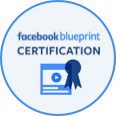 When it comes to marketing techniques, Local SEO is one that has been steadily increasing in popularity over the past few years. While the reasons for this are numerous, the main driver behind its growth is the growth in the use of smartphone and other mobile technology. When it comes to performing local SEO, many business owners and marketing experts treat it much like organic SEO, however there are a few distinct differences that exist. This is because the target audiences and anticipated outcomes of organic SEO is different than with local SEO.
When it comes to marketing techniques, Local SEO is one that has been steadily increasing in popularity over the past few years. While the reasons for this are numerous, the main driver behind its growth is the growth in the use of smartphone and other mobile technology. When it comes to performing local SEO, many business owners and marketing experts treat it much like organic SEO, however there are a few distinct differences that exist. This is because the target audiences and anticipated outcomes of organic SEO is different than with local SEO.
Local SEO is laser focused on promoting your business with customers who are currently in your local area. In the past, when someone conducted a search asking for the best steakhouse, they would be presented with results from all over the world. Today, however, thanks to advancements in search technology and the ability of search engines to take advantage of GPS positioning technology, when a search for the best steakhouse is conducted on your cell phone or tablet, you will be presented with a list of steakhouses that are located within 10 miles of your current location.
Marketing researchers have been conducting studies into consumer behavior for decades. In 2011, these studies began to show a shift in the way that end users were using the Internet, at least when it came to searches being conducted with mobile technology. Studies began to show a rise in the number of mobile users who were using search technology in order to find local businesses. Flash forward to 2013 and these same studies revealed that 4 out of every 5 searches being conducted on mobile technology were used to locate a local business. In addition, three of those same people actually went on to make a purchase. This makes getting your business optimized for local searches imperative to your overall marketing strategy.
So, how do you accomplish this?
Here are a few tips to make your website more local friendly.
Google Places for Business, Bing Maps and More
First and foremost, claim and complete your business profiles on Google Places for Business, Bing Maps and more. You need to include all of the pertinent information such as your business’s name, address, phone number, website address, email address, hours of operation, and other details. Make sure that this information is consistent across all of your profile pages within each site and across all of the sites. Add pictures, videos and interesting information about the local area and your business. Studies have shown that businesses that add multimedia options will rank higher than those who skip the pictures and video.
Add categories so that your business can be found more easily when users use search terms to locate your business rather than searching for you by name.
Google+ Local
Next, create a Google+ Local profile and then link your Google places page to it. Yes, Google+ is a type of social media platform, but social media plays a large part in local SEO and your customers can leave you positive reviews on Google+, which is also a big part of local SEO.
On-page local SEO
Once again, make sure that the name/address/phone number/URL and other pertinent information is included on the page and is consistent with what you have used on your business listings pages. Add quality content to your web pages that are of local interest. This will help search index crawlers categorize your site with relevance to your local area. And, last but not least, embed a Google map on your contact page.
And these are just a few of the things that you can do to increase your visibility for local searches.









